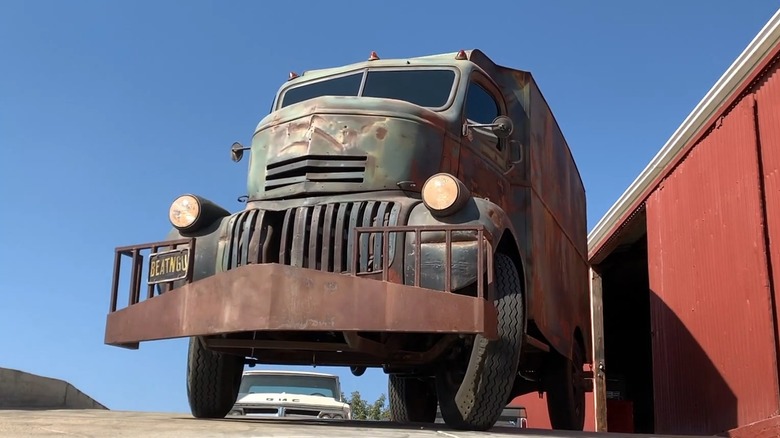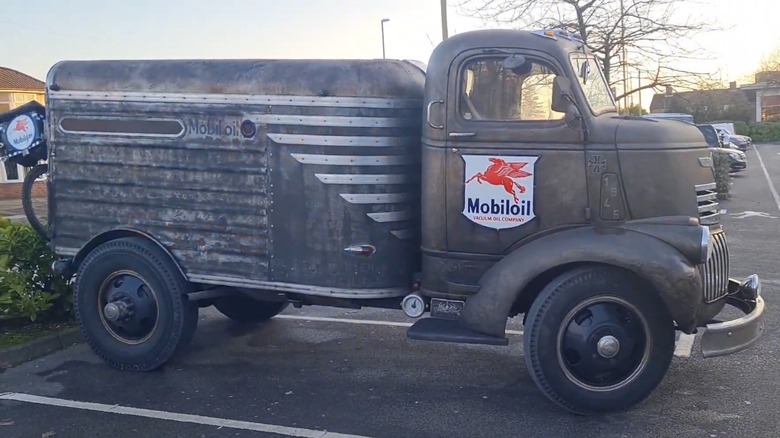What Kind Of Truck Was In Jeepers Creepers And What Engine Did It Have?
In 2001 audiences were introduced to a horrifying creature known as The Creeper, who relentlessly pursued a brother and sister through the rural countryside. Jeepers Creepers featured a robust makeup department, which not only provided the frightening look of the movies monster, but also the gruesome after effects following his attacks.
However, one of the elements that arguably added tremendously to the character of The Creeper, was his supernaturally charged 1941 Chevrolet COE complete with its oxidized green color and rusted front end. In fact, one of the first and most tense scenes offers the audience only a brief glimpse of the creature, but substantial screen time to the classic truck as it menacingly follows the siblings. Naturally, this isn't the only case of an iconic vehicle in a scary movie, with several examples of underrated horror movie cars that deserve the spotlight.
The COE for the film also included a brawny cattle catcher mounted to the front, which is a thick metal add-on typically mounted to a train to help clear blocked sections of track. While you might think The Creeper Truck just looked dilapidated, the actual truck's exhaust system was shot and required the driver to expel built up smoke in the cab between every take.
Regarding the 1941 Chevrolet COEs engine, it featured a 216-cubic inch six-cylinder (Blue Flame Six) and could produce around 80 horsepower. The Blue Flame Six was an update to something Chevy fans should know about, the Stovebolt engine.
What COE stands for and what made it different
The 1941 COE, which stands for cab-over-engine, offers a unique look, where the truck rises vertically, but also had variations with a noticeably short wheel base at just 109-inches. This unusual shape meant that it could excel in terms of carrying substantial amounts of cargo in the bed, while still managing to fit into tight retail store parking spaces. In fact, viewing the truck's profile, it looks as though a larger vehicle was pinched at the front and rear, pushing the body closer together.
When behind the wheel of the COE, the driver rides higher as the engine is located beneath, and the steering wheel and shifter both disappear into the floor of the cab. When you pop open the front hood, the only component visible is the radiator, a couple of hoses, and some wire. In order to gain access to the engine, you had to remove panels from the cab floor.
Vehicle interiors have changed dramatically over time with several modern examples of luxury pickup trucks that offer major comfort and style. But, back in 1941, a cab was extremely basic with the 1941 COE offering a Chevrolet Deluxe heater as an optional upgrade. Since these classic trucks underwent regular grueling work, the fact that there are still salvageable models found more than eight decades after its release is a testament to the COE build quality.

